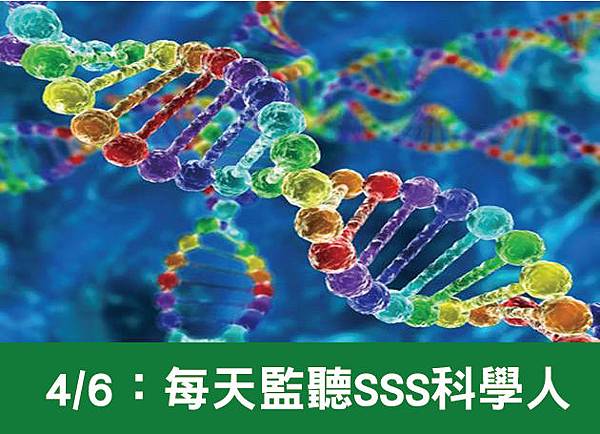 今日主題:Cellular Circuit Computes with DNA “基因電路”為細胞計算機鋪平道路
今日主題:Cellular Circuit Computes with DNA “基因電路”為細胞計算機鋪平道路
 洪欣老師推薦:托福聽力最好的課外教材:60-Second Science
洪欣老師推薦:托福聽力最好的課外教材:60-Second Science 康康精選托福會考的主題,堅持每天精聽一定會進步的哦!!
康康精選托福會考的主題,堅持每天精聽一定會進步的哦!!
 建議方法:
建議方法:
1. 先聽兩三遍 (不看文稿)
2. 再一句一句聽寫 (每句都要聽寫數遍,直到寫出85%以上的字)
3. 最後check文稿,看哪聽不出來,單字沒背過,還是發音不熟。
4. 堅持天天聽,就能每天進步哦。
 MP3音檔 (按右鍵可下載聽):喜歡的同學,幫忙推或按讚哦~~
MP3音檔 (按右鍵可下載聽):喜歡的同學,幫忙推或按讚哦~~
http://online1.tingclass.net/voaspe/2016/20160406sa_tech.mp3
 只有音檔怎夠,聽不懂地方,不用怕,康康幫你準備好中英文稿了:
只有音檔怎夠,聽不懂地方,不用怕,康康幫你準備好中英文稿了:
 中英文稿:
中英文稿:
Our smartphones, tablets, laptops—they all compute things electronically. But, think outside that silicon box for a second: "There's nothing special about electrons and using silicon as part of computing." Chris Voigt, a bioengineer at MIT. "You can do computing with any number of things." Including, he says, DNA.
我們的智能手機、平板電腦、筆記本——它們都是以電子方式進行計算。但是,考慮一下那個箱子之外的事物:“利用電子和矽進行計算並沒有什麼特殊的。” 克里斯•沃伊特是麻省理工學院的生物工程師。“你可以利用計算機計算任何事物的數量。”這其中,就包括DNA。
"Cells do computing all the time. So they're constantly trying to interpret their environment and be able to turn on different genes and respond to it." And those genes in a cellular circuit are like the logic gates, the memory, and other systems found in conventional computers.
“細胞一直都在進行計算。所以,它們一直在試圖了解周圍的環境,並控制DNA,並對其作出反應。”這些在細胞電路中的基因就像傳統電腦中的邏輯門、內存和其他的系統。
So Voigt and his colleagues created what he calls the first human-made "programming language" for living cells. It's an open-source design environment called "Cello." Just write what you want the cell to do, and Cello spits out the DNA sequence—as if you were compiling code. The researchers used the platform to design 60 genetic circuits, which they then ran inside E. coli bacteria. Many of these DNA-based circuits allow bacteria to sense environmental data - like levels of oxygen or glucose in the gut - and respond in various ways. They detail the findings in the journal Science.
所以,沃伊特和同事們創造了人類首例的活細胞“編程語言”。這種開放源碼的設計環境稱為“Cello”。你只需寫下需要細胞做些什麼,這時候Cello翻 譯DNA序列——就好像你在進行編碼。研究人員利用這一平台設計了60個遺傳電路,他們可以利用這些遺傳電路應用於大腸桿菌內部。許多基於DNA的電路都 允許細菌感覺環境數據——例如大腸中的氧氣以及葡萄糖的含量——並通過不同的方式作出反應。該研究結果發表在《科學》雜誌上。
Not all the circuits worked as intended. A quarter of them failed, and some were toxic to the cells. But the idea is to make cellular circuit design easier—and more approachable—to creative people. "When I was a graduate student I had a computer file for Microsoft Word that had all my favorite pieces of DNA. And I would have to sit there and stitch it together and try to remember how each one worked, and constantly run programs to try to look for mistakes."
但是並不是所有的電路都會按照預期的方式運行。有1/4的電路失敗了,而有的電路則會毒害細胞。但是,這種創作想法會使有創新精神的人將細胞電路設計更加 簡單——更易成功。“當我還在讀研究生的時候,我有一個電腦文件裡面包含了我最愛的DNA片段。我會坐在那裡,將這些片斷拼接到一起,並試圖記住這些片斷 是如何運作的,我還經常運行程序試圖找到其中的錯誤。”
Cello takes care of all that. And now, Voigt says, biology is right about where electrical engineering was in the early 80s: ready for a computing revolution.
Cello會處理以上所有的問題。現在,沃伊特稱生物學就像80年代早期的電器工程:已經為計算機革命做好準備。



 留言列表
留言列表
